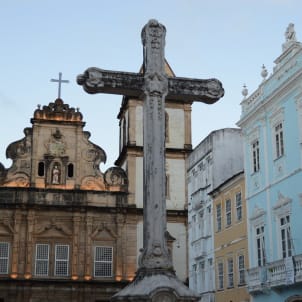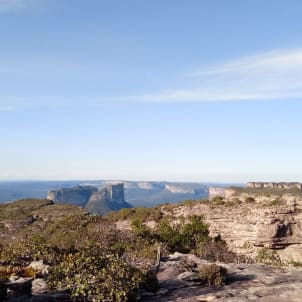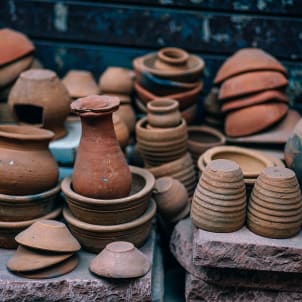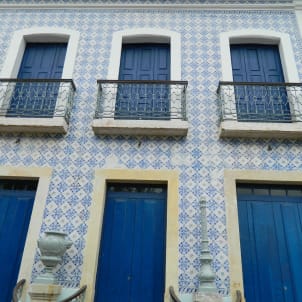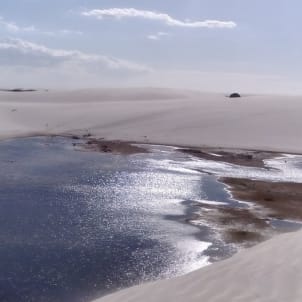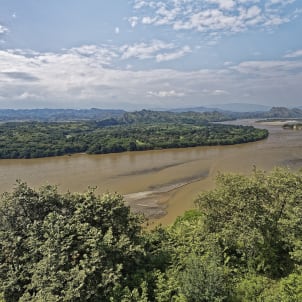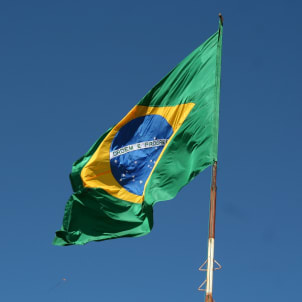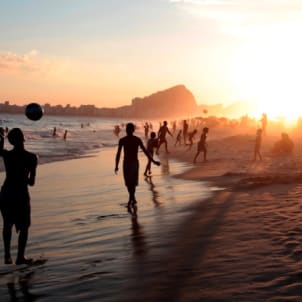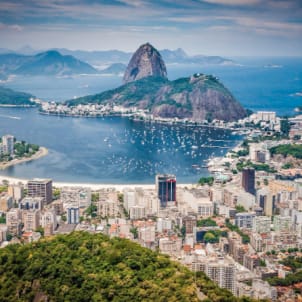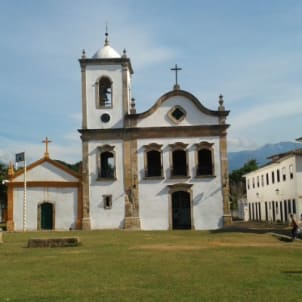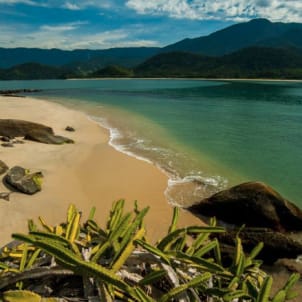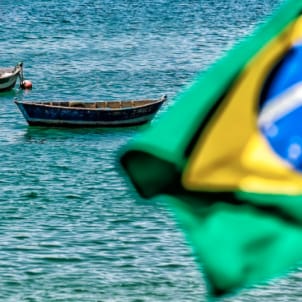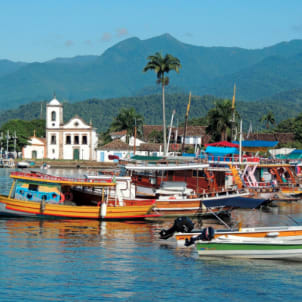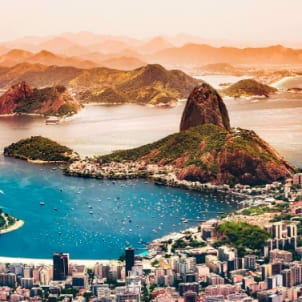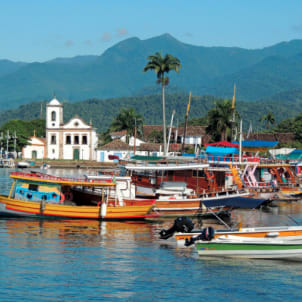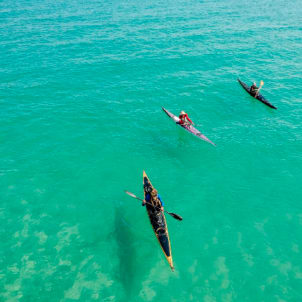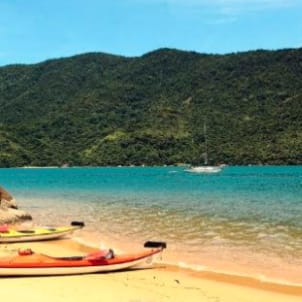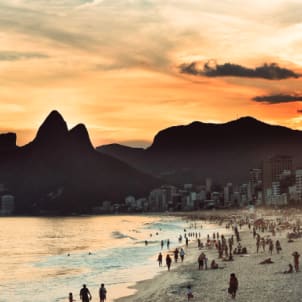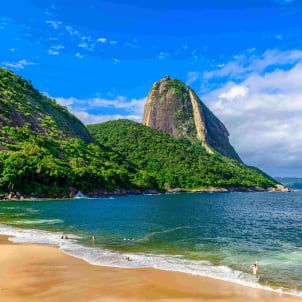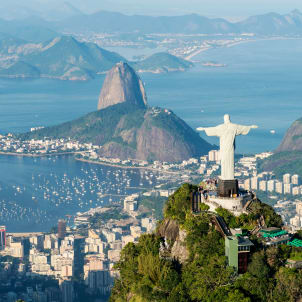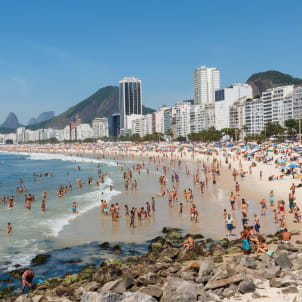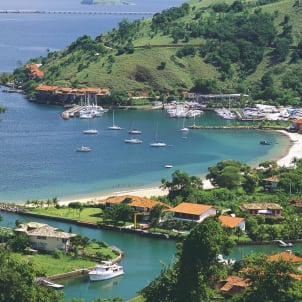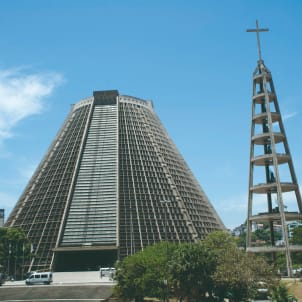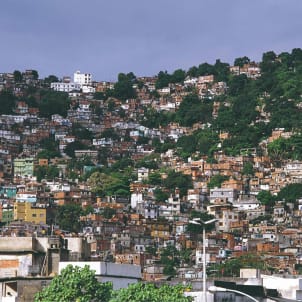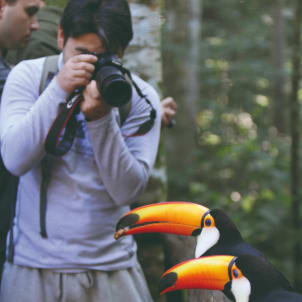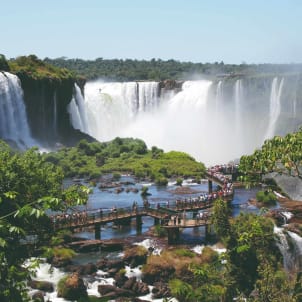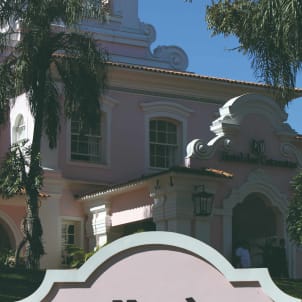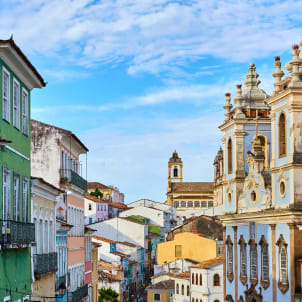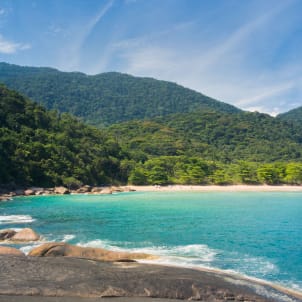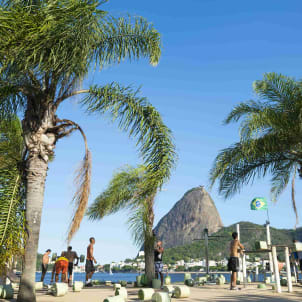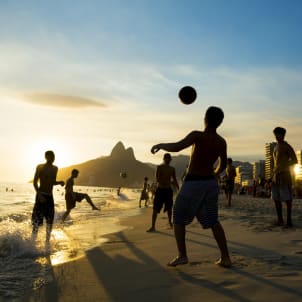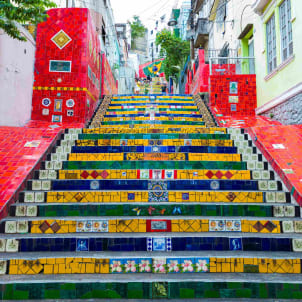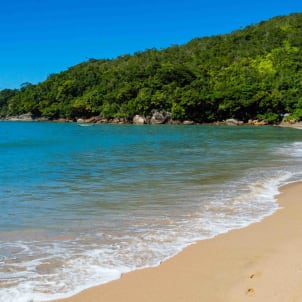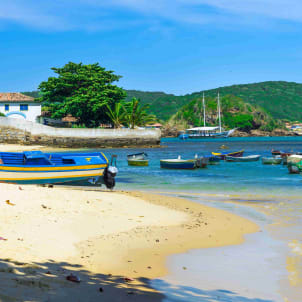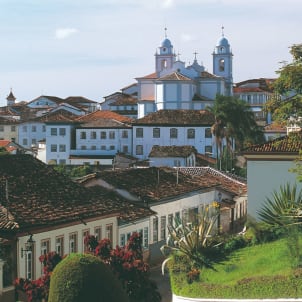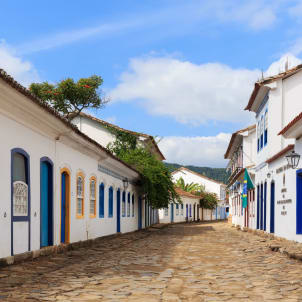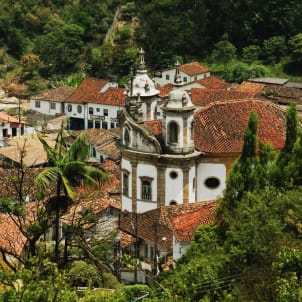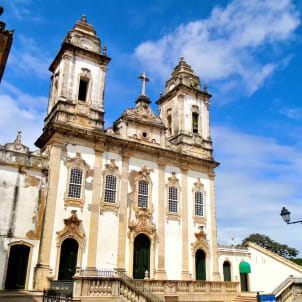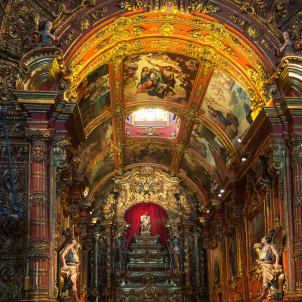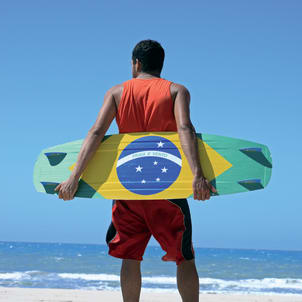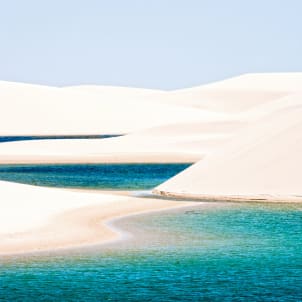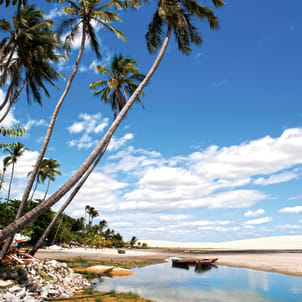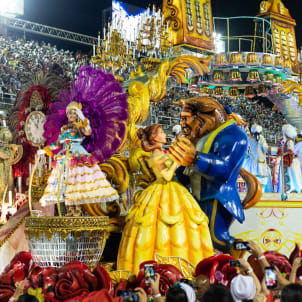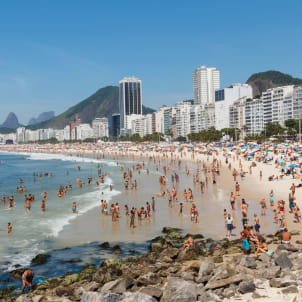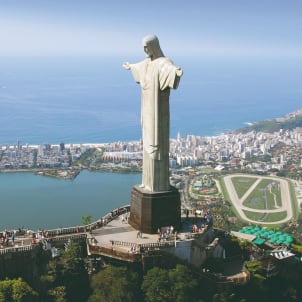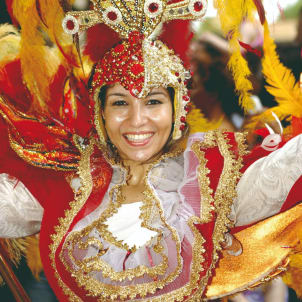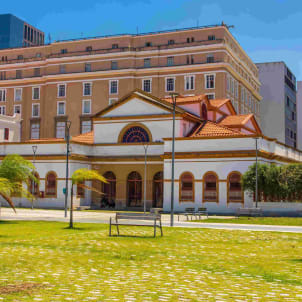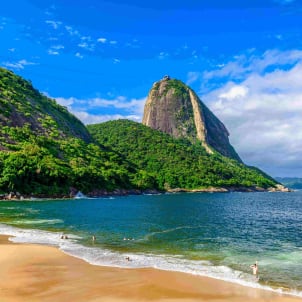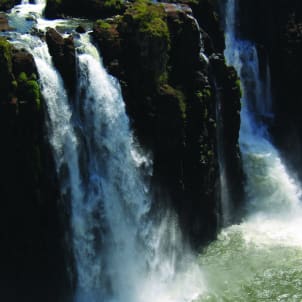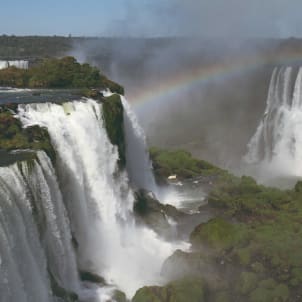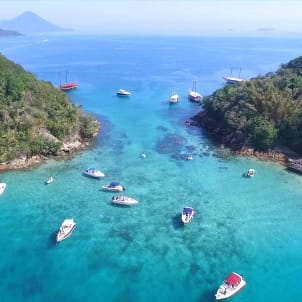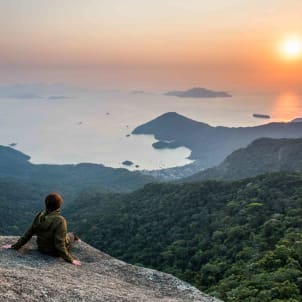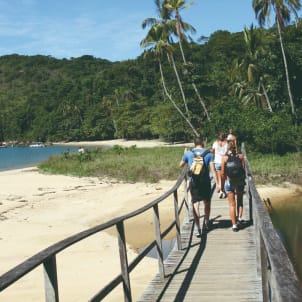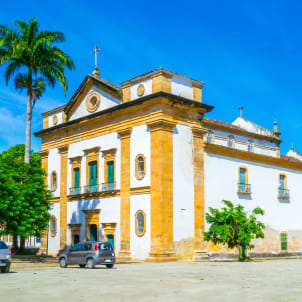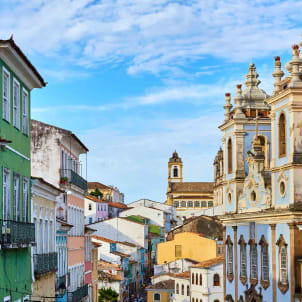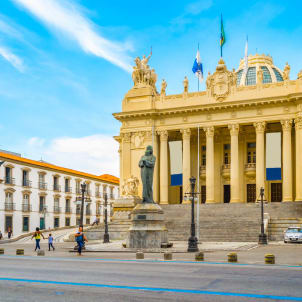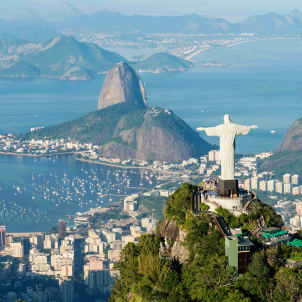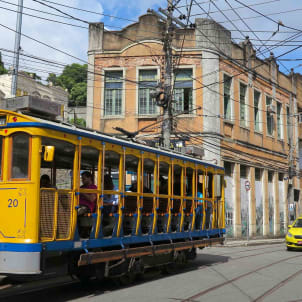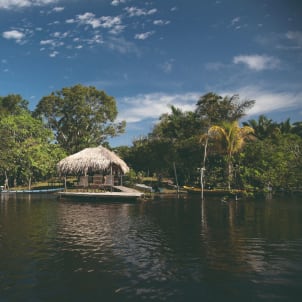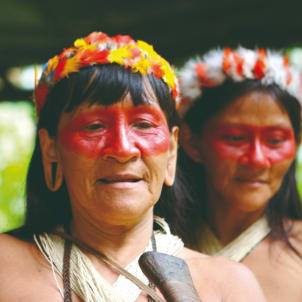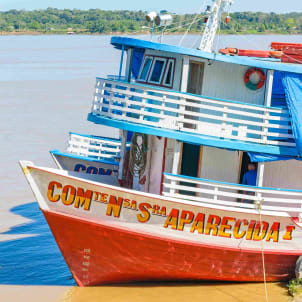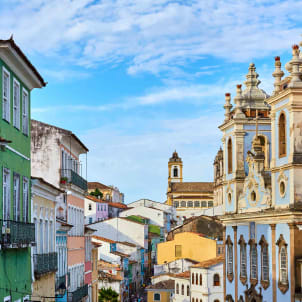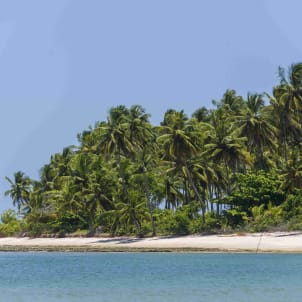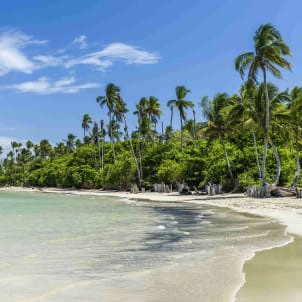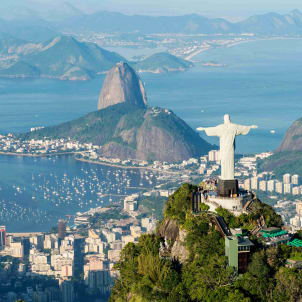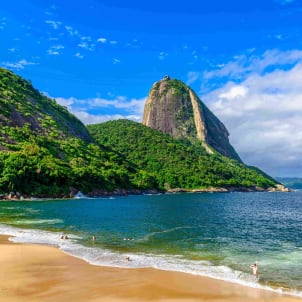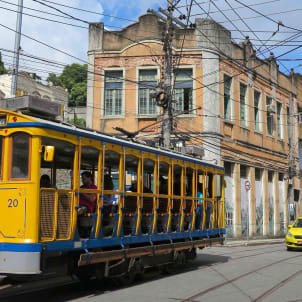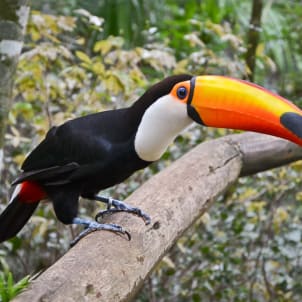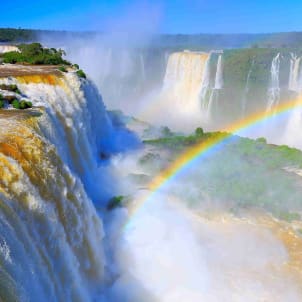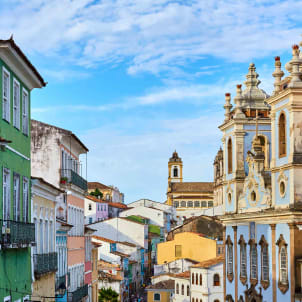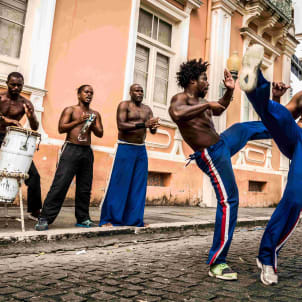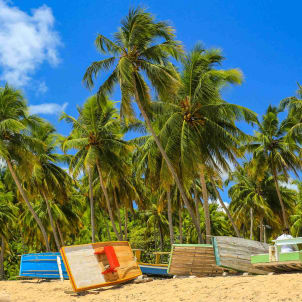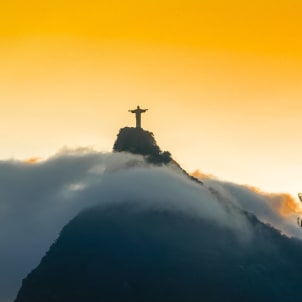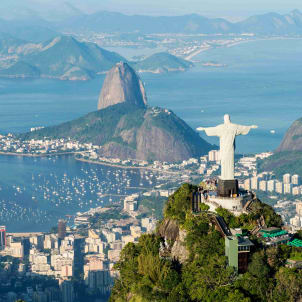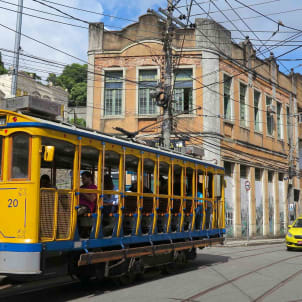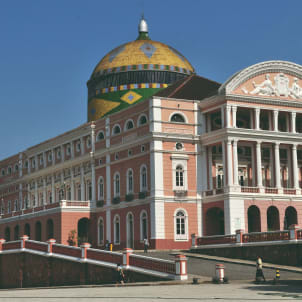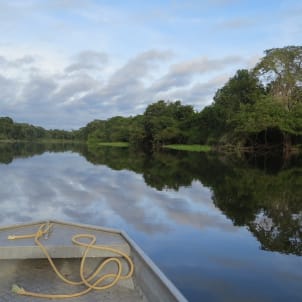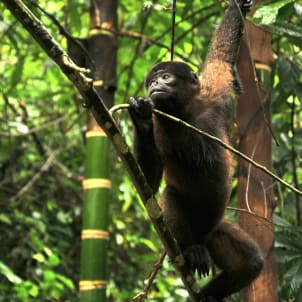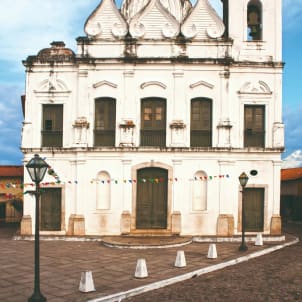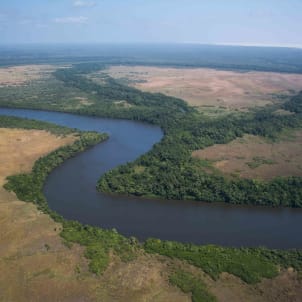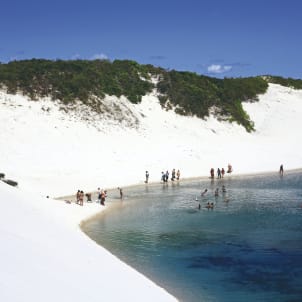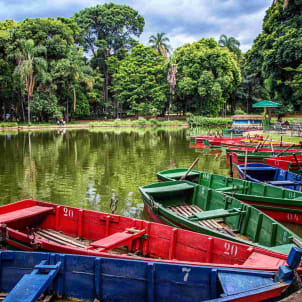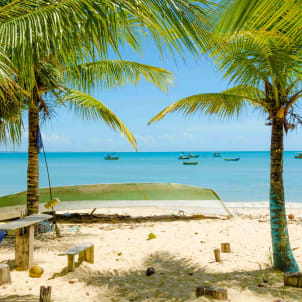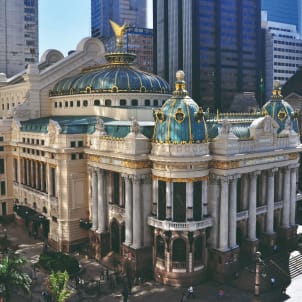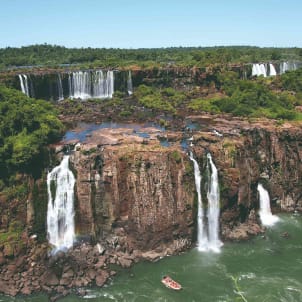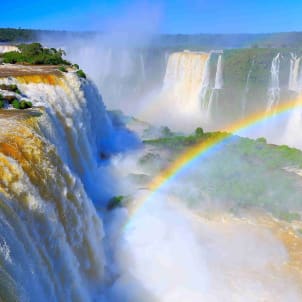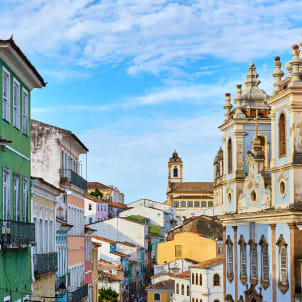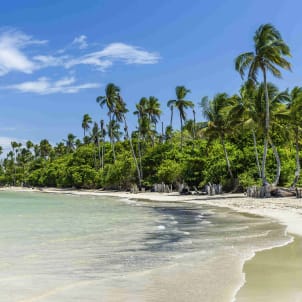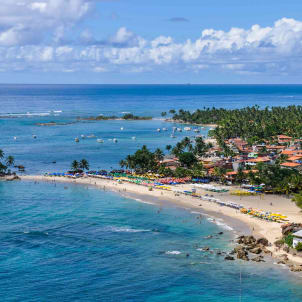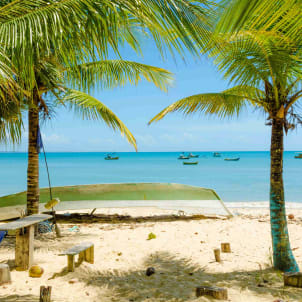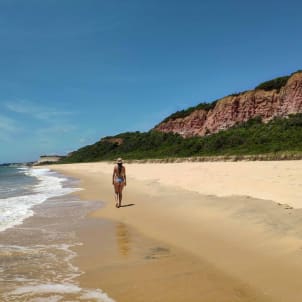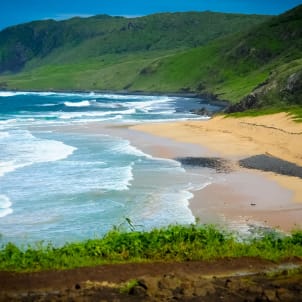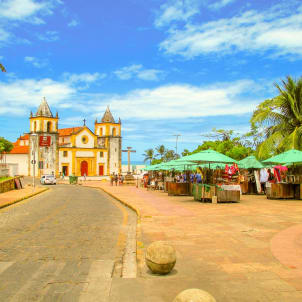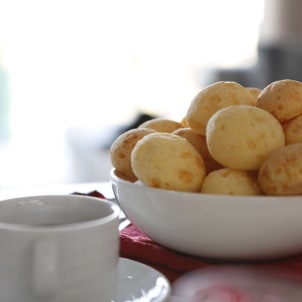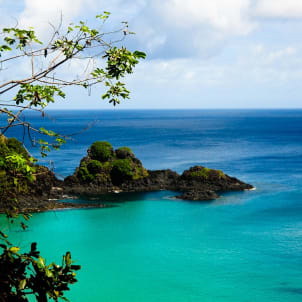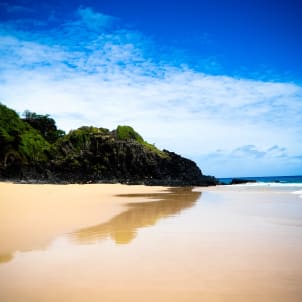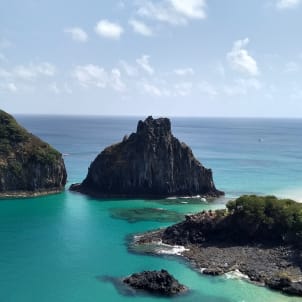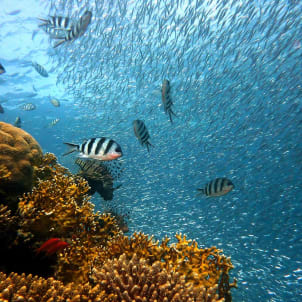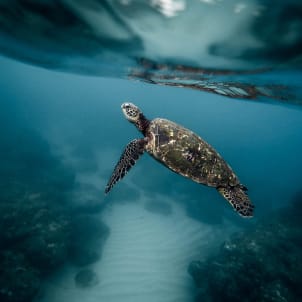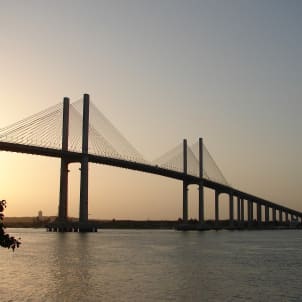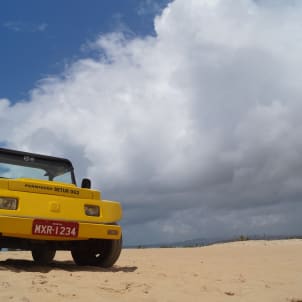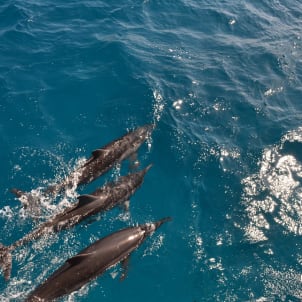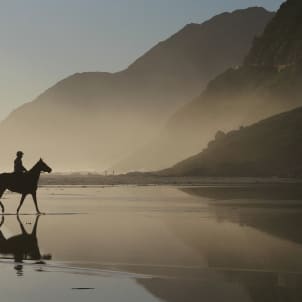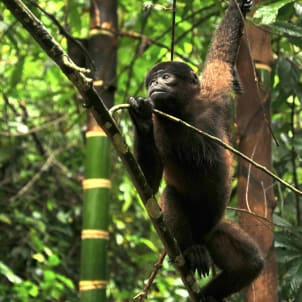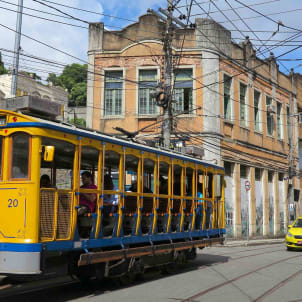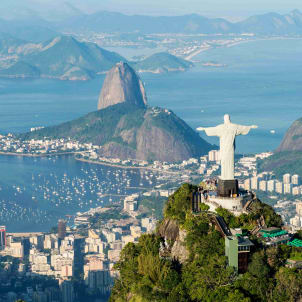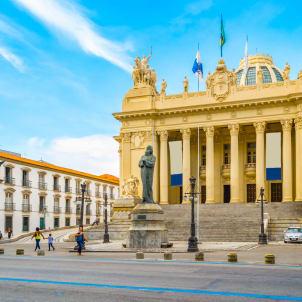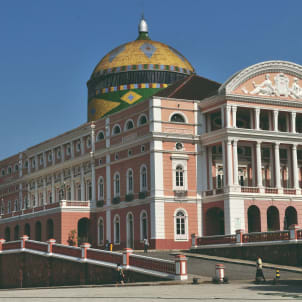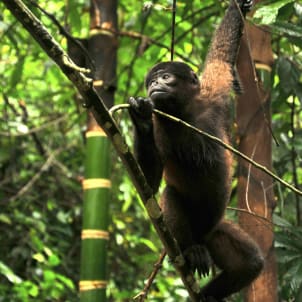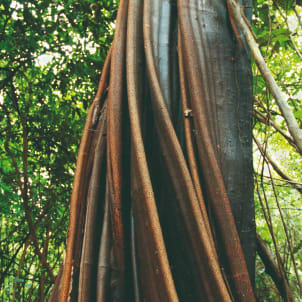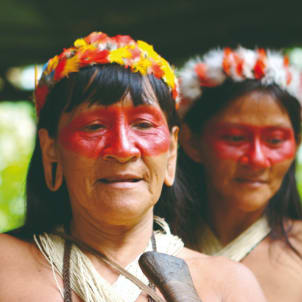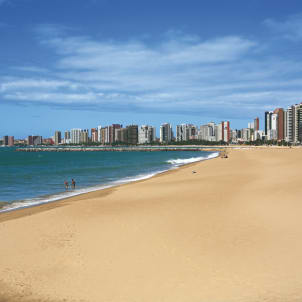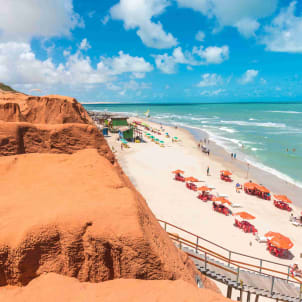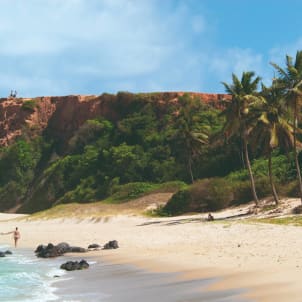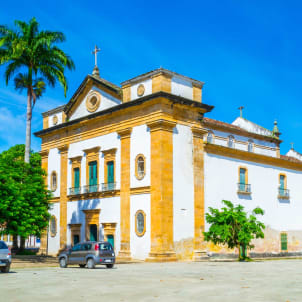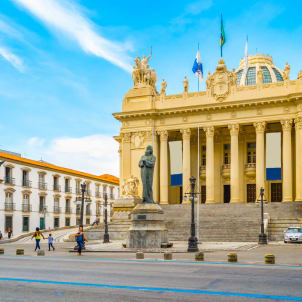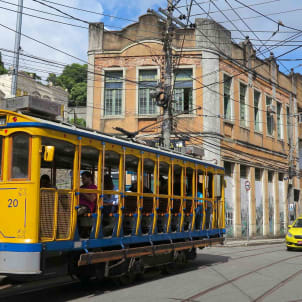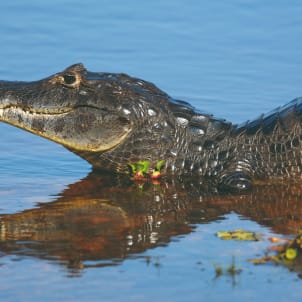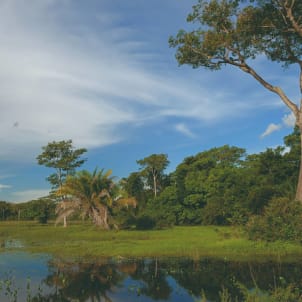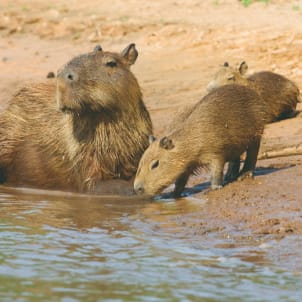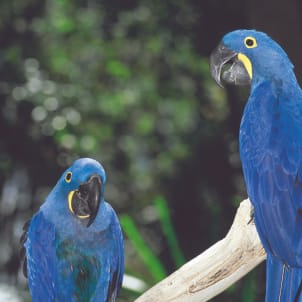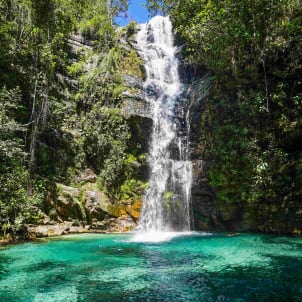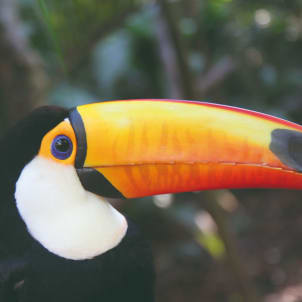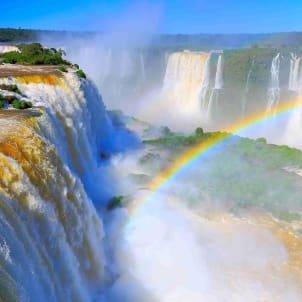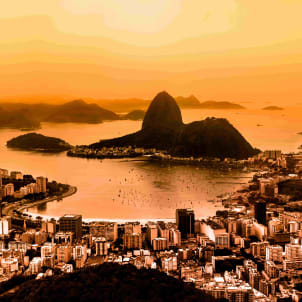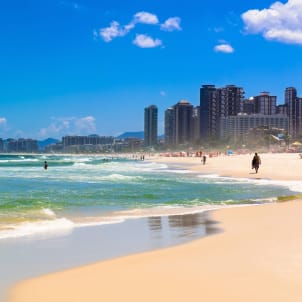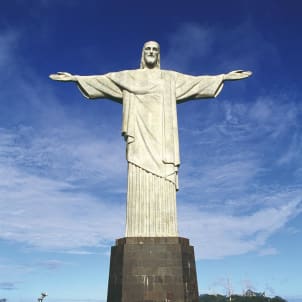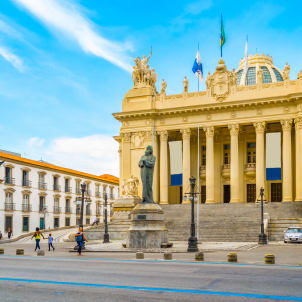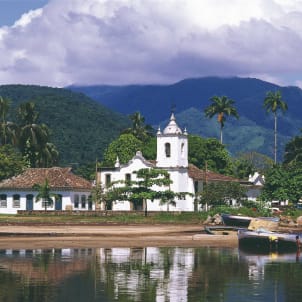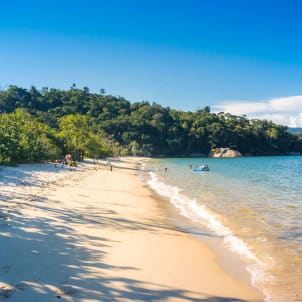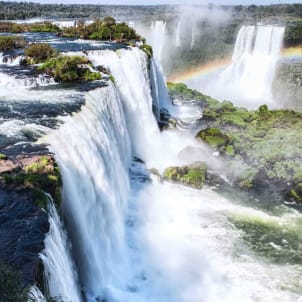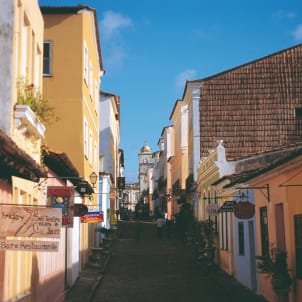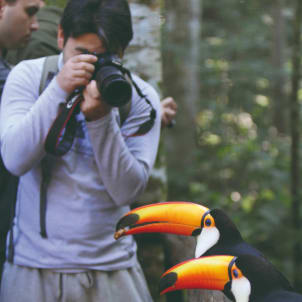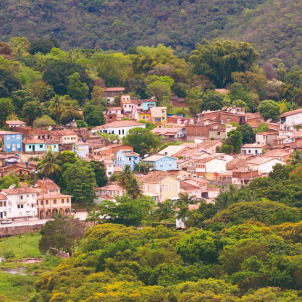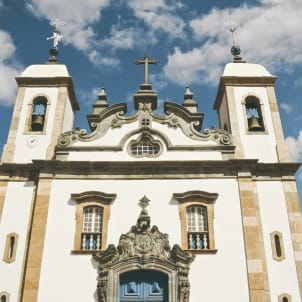Tropical escape in Brazil
4.4/5272 reviews
Brazil, land of samba and endless beaches.
Explore a vibrant paradise between nature and culture.
Must-see locations
Discover Brazil, an unforgettable tropical adventure
From the vast marshy plains of the Pantanal in the state of Mato Grosso, the kingdom of jaguars, to Recife, the Venice of Brazil, on the Atlantic coast, from the vast Amazonian rainforest in the northwest, the largest ecological reserve in the world, to the Iguazu Falls (Iguaçu in Portuguese) on the Argentine border, from the futuristic architecture of Brasilia, the capital, to the favelas of the popular neighborhoods. But Brazil is not only about cachaça, its dream beaches symbolized by the mythical beaches of Copacabana and Ipanema in the heart of Rio de Janeiro.
Brazil is also and above all the product of a remarkable Portuguese version of mixing between Africa, Europe, Asia, and Amerindian culture. A nation of a thousand colors that parades every year in February to the rhythm of samba in the streets of Rio de Janeiro during a magical carnival under Sugarloaf Mountain and Christ the Redeemer (Corcovado). A trip to Brazil is always an opportunity to immerse oneself in unique atmospheres: between Amazon jungle and colonial architecture cities like Diamantina, but also Fortaleza, Sao Luis, Belo Horizonte, Belem, La Diamantina, Goias, Sao Cristovao, Capivara Park, Chapada Diamantina Park, Praia do Forte, Natal, Itacaré, Paraty…
A Captivating Journey to the Heart of a Fascinating Country
Traveling to Brazil is embarking on the discovery of a tropical country fifteen times larger than France, stretching over nearly half of South America's area. With such vastness, it is not surprising to have access to an incredible geographical and cultural diversity for a tailor-made trip to Brazil. Whether on a honeymoon, with family, alone, or with friends, Brazil offers a multitude of unforgettable experiences. From paradisiacal beaches to the lush Amazonian forests, and through vibrant cities like Rio de Janeiro and São Paulo, every visitor can find their happiness there.
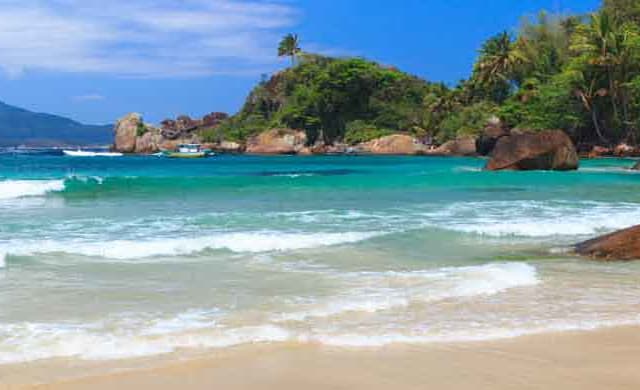
The Highlights of Brazil
The beaches of Santa Catarina, less frequented and known than the famous Carioca beaches of Copacabana and Ipanema, offer a unique experience in southern Brazil. With hundreds of beaches spread across the island and the state of Santa Catarina, there is something for everyone: deserted, festive, or sporty. Everyone can find their ideal spot to swim and enjoy an enchanting setting.
A spectacular sight also awaits you in southern Brazil, at the Argentine border, with the Iguazu Falls. These majestic waterfalls, listed as a UNESCO World Heritage site, consist of 275 falls extending nearly three kilometers wide. The surrounding natural park is a haven for local wildlife, notably home to jaguars and capybaras.
In Rio de Janeiro, the Cariocas have so much to offer that an extended visit is warranted. From the Christ the Redeemer statue to Sugarloaf Mountain, including iconic beaches and cultural neighborhoods such as Santa Teresa, Rio abounds with natural and cultural attractions.
Finally, the Afro-Brazilian atmosphere of Salvador de Bahia's historic center will immerse you in the heart of Brazil's history. This vibrant city is a true cultural gem that will enchant its visitors.
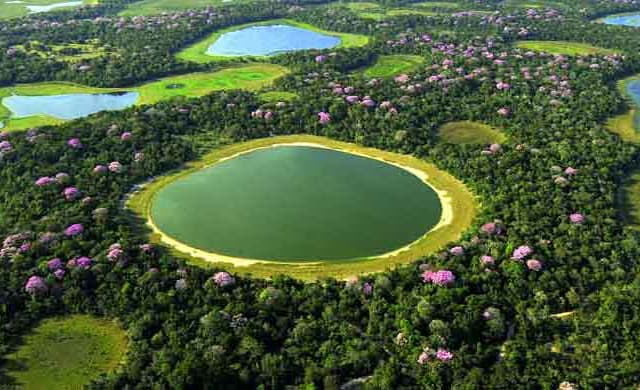
Unusual Discoveries in Brazil
Unusual Discoveries in Brazil
The Pantanal, the most beautiful nature reserve in Brazil
Flooded half of the year, the swampy reserve of the Pantanal in the state of Mato Grosso reveals all its charms when the dry season arrives in March. This vast marshland, as large as a third of France, is the largest wildlife sanctuary in Brazil, the best place to observe the jaguar, but also the jabiru, the park's emblem, a cousin of the stork.
The white sand dunes of Lençóis Maranhenses National Park
In northern Brazil, in the state of Maranhão, stretch over 1,500 km² along the coast the white sand dunes and paradisiacal lagoons of Lençóis Maranhenses National Park. A white, blue, and emerald spot just steps away from the Amazon rainforest. A journey within a journey in Brazil.
Ilha Grande, the small Brazilian paradise
The tranquility of Ilha Grande island with a caipirinha at your lips. A former pirate haven turned into a little slice of paradise awaits you on Costa Verde, 150 km south of Rio. A wonderful place for swimming, diving, snorkeling, lounging, and trekking in the lush jungle on an island still wild and preserved from large luxury hotels and mass tourism. An ideal destination for a honeymoon.
Land of Carnival and Music
The famous Bahian writer Jorge Amado titled one of his works "The Country of Carnival," highlighting the importance of this celebration in Brazilian culture, stemming from the fusion of peoples and the relationships between masters and slaves. The Rio Carnival is the largest popular event in the world, attracting a third of tourists to Brazil. It consists of samba school parades, "blocos de rua," and balls. For four days, the country is gripped by collective madness.
In Bahia, the carnival differs with its "Trios elétricos" featuring organized groups following sound trucks. In Pernambuco, frevo enlivens the streets of Olinda, while in Minas Gerais, musicians mingle with the public. Samba, the emblem of the country, originates in Rio with its traditional schools such as Mangueira. Bossa nova, influenced by jazz, introduced worldwide classics like "Garota de Ipanema" by Tom Jobim and Vinicius de Moraes.
A Charming Population in Brazil
Despite the country's social violence, linked to its slave-owning heritage and current social inequalities, visitors will quickly be captivated by the extreme kindness of Brazilians. Their need to talk for hours, whether in front of a beer or simply on the doorstep, is notable. The friendship of Brazilians is readily extended from the first meetings. You may meet a Brazilian who will accompany you for several days as if you were long-time friends, simply for the pleasure of showing you their city and country.
However, beware that promises of future meetings are not always kept. Brazilians also experience fleeting friendships, especially in Rio. One can make friends very quickly but lose them just as fast. "A gente se fala," which is equivalent to our "let's call each other," means "see you later... maybe." This is likely due to the inherent mobility in the past lifestyles of Brazilians. The notion of "anthropophagic country" will make sense upon returning to the homeland, as it will inevitably be accompanied by intense saudade. Of course, friendships are not always selfless, poverty compels, just like the fleeting glances at Copacabana or in some tourist bars. A word to the wise!
A Mixed and Flavorful Cuisine
Cuisine and gastronomy reflect regional and national cultures. Brazil, rich in its Amerindian, African, and European influences, offers diverse gastronomy. Each region presents unique dishes composed of local products. In Minas Gerais, cooking involves a lot of pork and beef, potatoes, beans, and other cooked vegetables. Further north, cassava, influenced by indigenous culture, is ubiquitous. In Bahia, African influences predominate with the use of fish, spices, and dendê oil. The Bahian moqueca, for example, requires fish, onions, bell peppers, and coconut milk. Dishes like gaucho churrasco or carioca feijoada are popular throughout Brazil. In the big cities, Brazilian gastronomy becomes a modern laboratory where local and international influences meet.
A website by
Customize your trips with Quotatrip and receive tailor-made offers directly in your inbox.
Discover a country


